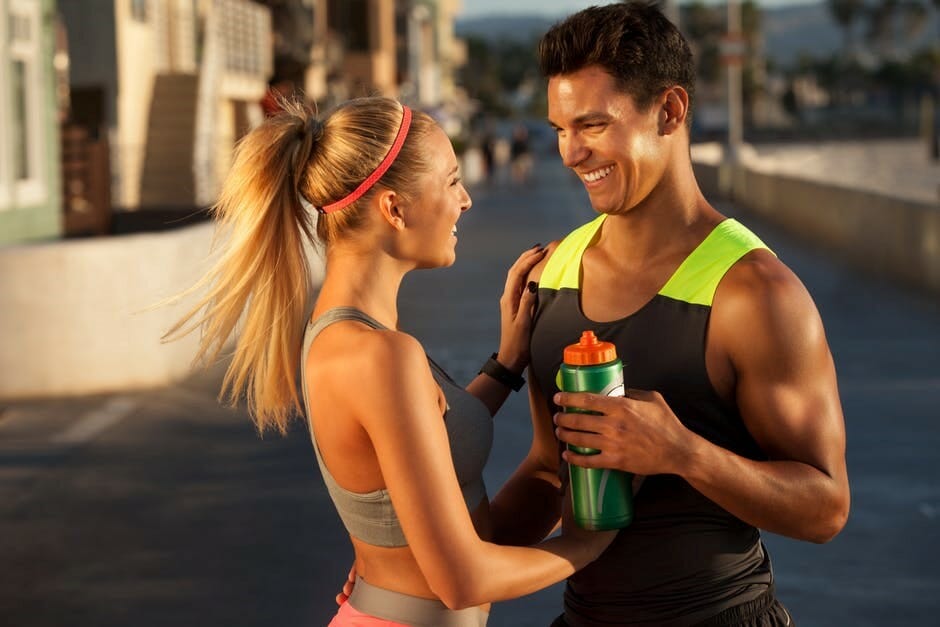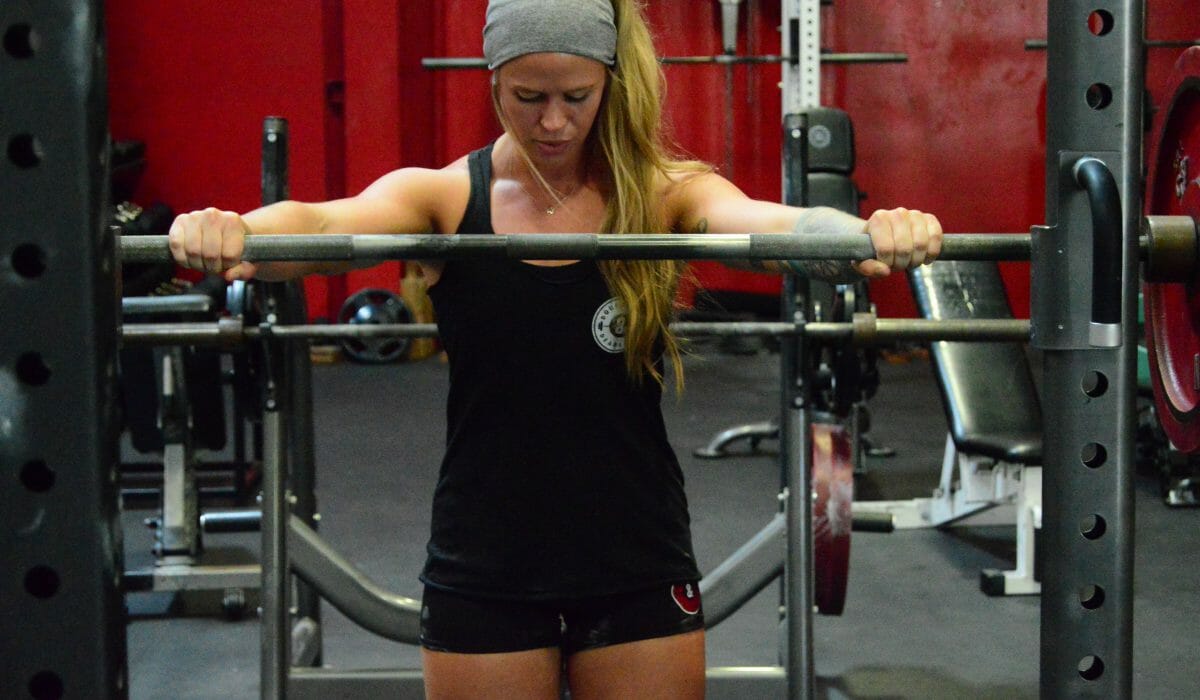Nowadays, appearances are being brought to our attention constantly. Through billboards, TV commercials, magazine ads, and social media to name a few. It’s enough to make you stop and check yourself in every reflection you pass by, or to sneak in an ‘ab check’ every now and again. Because let’s face it; we live in a tough world with high standards. But, what’s realistic for you? Most people have extremely unrealistic expectations for themselves regarding body image.
Talk to one of our IIFYM coaches, or check out the macro calculator to see what could work for you. Because let’s be honest, not everybody was meant to fit in a size 2. And hey, that’s ok! Rock those big beautiful quads. Some of us are watching you in the gym…envious.
How the Body Ideal Has Changed Along With Our Body Image
Throughout the years, body image and the ‘ideal’ has changed dramatically. We’ve gone from curvy, modest women, to busty, lean, pouty-lipped vixens who have no problem showing off their round glutes to the world on a daily basis.
As times changed, so did the ideal beauty. Unfortunately, not everyone fits into the box of ‘what ought to be’. If you were to scroll through the latest and greatest Instagram hashtags, many of the most popular photos are of thin, round booty’d young women; scantily clad. Quite a change from the full-bodied swimsuits of yesteryear.

Perception and Why the Ideal Body Image is Flawed
In your day to day life, how often do you see these bronzed, muscular, lean bodies? Not very often, right? There’s a reason for that. The portrayal you see on social media is not accurate. There are numerous tricks and hacks to give the illusion of, well, basically anything you want. Want to look more successful?
Rent a nice car, borrow a high end, well to do looking suit, toss on a smile and snap a photo giving the illusion of grandeur. Want to look bustier? Throw on a pushup bra, and there you go.
Being a size 2 as a cardinal rule of success is just as annoying as saying 1,200 calories is the magic number for weight loss.
Such a simple change has such a massive effect; thus altering body image for those who see this. None of this is real. Just like what we see on social media. People only show you what they want you to see. Which means they probably won’t be posting photos of their rusted 1994 Toyota Camry with the busted tail light, or that 5lbs they gained over Christmas.
But don’t worry, you’ll be keeping that holiday weight gain to a minimum following IIFYM. Better body image and you get to have your cake and eat it too? IIFYM for the win!
Tips, Tricks, Hacks
There are certain ways to cheat the system. I guess you could call IIFYM cheating the system too. Losing weight and eating the foods you love? Life is so good, but back to social media. That’s what Instagram is for the most part. Algorithms, robots, spam accounts, hashtags; it’s all a game truly.
So, to get an advantage, we filter, bend, work our lighting, and do basically anything possible to get that edge. Body image weakening the more we try to keep up. Here are a few things you should know about the ‘fitspos’ you see on social media and why you shouldn’t base your body image on what you see.

They’re not that lean year round.
Many of the fitness icons with massive followings are not shredded year round. Plus, many who demonize IIFYM, giving the impression that in order to be lean machines like they are, you MUST ‘eat clean’. All the while, inadvertently practicing a form of IIFYM on those weekend binges. Although it may appear that they’re lean and sculpted 365 days a year, it’s not realistic.
So, what many do is load up on photos when they’re at their leanest, and release the photos throughout the year giving the illusion of sculpted shoulders and tight, perfectly carved abs. The saddest part? They’re probably struggling with body image as well. It’s difficult going from a stage lean sculpted body, back to a manageable, realistic weight.
Which is why many want to live in a perpetual state of lean, God/Goddess like physical stature. What better way to do that than through social media?
They don’t just eat burgers and donuts.
IIFYM is great. Obviously. That’s why you’re on this site. But, all those cookies, donuts, and burgers they post about? That’s not an all the time thing. Again, many hoard photos, and post them at their convenience.
In reality, many eat a balanced diet. It’s not all fun foods and binge eating while waking up with a six-pack. IIFYM is amazing, but it’s not magic.
Some social media celebrities use some sort of performance enhancer.
Whether it’s for muscle growth or fat loss, it’s no secret there are performance enhancers within the fitness community. What’s unfortunate, is that many who are new to the fitness scene are unaware of this and look to these individuals for inspiration, and strive to be just like them.
That’s fine; until you begin to feel discouraged that your shoulders are nowhere near the size of your favorite fitness model, or that you can’t reach the level of leanness many do. Plus, like I said, many take a ‘bro’ approach.
Demonizing IIFYM, while expecting people to forever abstain from treats or ‘fun foods’. Self-esteem and overall body image take a massive hit when you can’t live up to the standards of your favorite IG models. It goes without saying that some of these pages are downright discouraging and have a massive effect on body image.
They work their angles

Choose your favorite fitness hashtag and check out the posing dawned in each photo. Notice something? Maybe it’s because we’ve become so accustomed to it, but standing with your back overly arched, your glutes popping outwards, and your chest out, drastically changes the way a body looks.
Not to mention high waisted leggings, flexing, turning your legs inward/outward, pulling your shoulders back, etc. You get the point. A body overly posed compared to the same body standing in an anatomical position is going to show a massive difference. It’s all an illusion. Thus continually changing the ideal body image, and what’s perceived as ‘normal’.
Work With What You’ve Got
There are thousands of women out there that would love to ‘fit into a size 2’. But, that’s very unrealistic for many people. Being a size 2 as a cardinal rule of success is just as annoying as saying 1,200 calories is the magic number for weight loss.
Unless you want to start shaving your bones down, it’s just simply not plausible to shoot for an unrealistic goal such as fitting into a size 2 dress when you were born with curvy, wide hips.
There is no ‘happiness weight’, there is no musculature that will bring you complete joy, contentment, and an ideal body image, and there is no ‘diet’ or magical foods that will get you where you want to go…
Granted, it works for some women, but that’s SOME. Just like SOME people can lose weight without counting macros/following an IIFYM diet plan. Bodies come in all shapes and sizes. There is no one size fits all. Some men are born with a naturally wide back and small calves (oh, the horror).
Some women are born with small, narrow shoulders and wide hips. You cannot change your body structure. What you can do is build on it, embrace it for what it is, and improve your own perception of body image.
What you see in the mirror every day is your body at its best, but also at its worst. The same goes for these fitness icons. Although they give the illusion of perfection on social media, odds are they feel the exact way we all do at times; completely inadequate with a less than perfect view of their body image.

Mental Health – It’s Just As Important As Physical Health
Have you seen those women at the gym in between their sets marching in place? I have. It’s obsessive and strange; trying to burn as many extra calories as possible. Being “healthy” is such a relative term.
Some people try so hard to be healthy, they, in turn, become extremely unhealthy in their actions and obsessive mannerisms. Healthy is a term used for physical health, but just as important is mental health.
This health and fitness trend is becoming a disorder in itself. What it is, is semantics. You can call it health and wellness all you want, but what it actually is, a disorder when taken to the extremes many take it to, and it drastically affects body image. IIFYM is mocked, and ‘clean eating’ is praised and almost creepily coveted.
There’s even a new eating disorder called ‘orthorexia’ that’s popped up within the last several years. This is an obsession with eating only ‘pure, clean’ foods. That’s where we really have to look at the fine line between health and an unhealthy obsession.
Body Image and ‘Clean Eating’
Here’s a familiar scenario that’s seen quite often in the bodybuilding/fitness community:
A woman discovers physique competitions and wants to prove to herself that she can put on a swimsuit, get onstage, and strut her stuff showing off her hard work to the world! But, where to begin? An online coach suggests she cut out gluten, dairy, sugar, and fruit. But, she can treat herself to one cheat meal a week. She’s heard of IIFYM, but hey, that’s only for the weak!
The aspiring competitor restrains herself all week; avoiding plans with friends, bringing her Tupperware everywhere she goes, scouring food labels ensuring there’s no sugar or gluten contaminating her clean diet plan. But, once Saturday hits, it’s time to give into her cravings.
She orders an appetizer, followed by an entrée, and of course, dessert. Fitting as many treats into her meal as possible. Before you know it, she’s consumed 3,350 calories for dinner (this total is taken from a popular chain restaurant).
When it would be best to avoid such diet plan-wrecking behavior by hiring an experienced IIFYM coach to create a Macro Blueprint, that’s centered around balance.

Fast forward post-show. The competitor has successfully made it to the stage! Now what? Post-show blues settle in, and there’s no goal on the horizon. Inevitably, abstaining from treats becomes difficult, and the competitor starts to give in. Bingeing on chips and pizza, and afterward, feeling horrible shame and guilt.
Plus, after this intense dieting phase, these massive binges lead to unwanted weight gain, plus a diminished body image. This then sends the competitor into another diet phase through ‘clean eating’. Thus starts the yo-yo of dieting, binging and an unhealthy relationship with food.
Yes, it happens. Often. By the end of it all, her body image is trashed, and much of this could’ve been avoided by implementing IIFYM.
Body Image and IIFYM
Here’s another scenario:
A new competitor decides to hit the stage. They hire an IIFYM coach who follows flexible dieting principles and macro counting. They manage to fit a treat in here and there throughout the week, and maybe even a little more on a weekly refeed day. No restrictions, no bingeing. The competitor can go out with family and friends, ordering mindfully from the menu.
Fast forward post-show. The competitor increases calories, while still enjoying the food she loves following an IIFYM diet plan. No need to binge, no need to feel shame. There’s no massive weight gain, and no pit of shame she needs to climb out of. Plus, due to moderate, reasonable weight gain, the competitor’s body image is still in a positive place and allows her to carry over into her growth season happily.
Changing Your Body Image Won’t Bring You Happiness – Changing Your Mentality Will

As many set out on their fitness journey they believe “if only I reach this weight I’ll be happy!”. Unfortunately, that’s not true.
There is no ‘happiness weight’, there is no musculature that will bring you complete joy, contentment, and an ideal body image, and there is no ‘diet’ or magical foods that will get you where you want to go (again, IIFYM for the win!). Ask anyone in the gym; you will never be as big as you want to be, or as lean as you want to be.
Stop Chasing the Ideal Body Image
Chasing that ideal physique is a forever quest, and the ideal is constantly changing. Below are a few tips for finding that balance and keeping a healthy body image/mentality as well as a healthy physique all while following IIFYM:
- When browsing through social media, keep in mind that most things are not as they appear. These fitness icons are human too. Flawed, insecure and definitely not perfect.
- If you’re still thinking about that donut you ate last week, and not in a reminiscing sort of way, that is NOT healthy. You can have a healthy body while still enjoying ‘fun’ foods. That’s the beauty of IIFYM!
- Focus on what your body is capable of, not just how it looks. If you’re a competitor, it can be difficult transitioning from lean, prep body into fluffier, offseason body. So, rather than focusing on what your body looks like constantly, focus on what it can do. Set goals, hit new PRs, and focus on how amazing you feel at healthy body weight. Feeling good in the gym, and feeling good about the food choices you’re making (enjoying a balanced diet and foods you love through IIFYM), is a great way to improve body image.
Reality vs. perception when it comes to body image is a tough topic. When we’re constantly being bombarded with these perfect images it evokes strong feelings of inadequacy in many people. Many use these social media pages as motivators, but end up feeling discouraged.
Scroll with caution, and keep these things in mind next time you’re feeling less than perfect, and reach out to an IIFYM coach to find a goal that’s realistic for you. A great place to start is with their Macro Blueprint which is personalized to your goals.
Originally posted 2019-01-30 18:15:22.

No comments:
Post a Comment